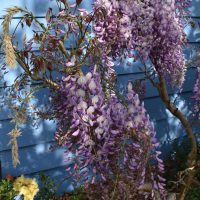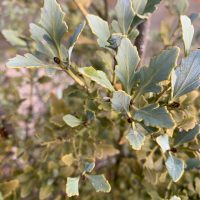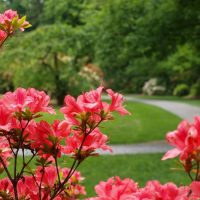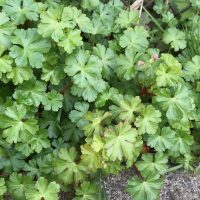May 2020 Plant Profile (extra): Asparagus officinalis

The UW Farm planted more asparagus plants as an act of hope for Earth Day and for those challenged by COVID19, because we will not harvest until 2022. The UW Farm highly recommends planting asparagus in your garden, due to the ease of growing and harvest and nutritional benefits.
Read moreWisteria Standards

Horticulture supervisor Roy Farrow reveals the secrets to pruning wisteria for a floristic display that doesn’t engulf the house.
Read moreMay 2020 Plant Profile: Quercus robur ‘Concordia’

No other tree in the Arboretum is as beloved as our Golden oak, Azalea Way’s sentinel and harbinger of Spring.
Read moreUWBG at Home: Plant volunteers: panacea or pain in the neck?

Flowers that grow without help from the gardener can be charming, but also may try to take over the garden.
Read moreSelected Cuttings from the Home of Annie Bilotta, Horticulturist at the Center for Urban Horticulture

Pacific Northwest Natives
1) Berberis aquifolium, formerly known as Mahonia aquifolium Tall Oregon Grape
Native to the Pacific Northwest from British Columbia to northern California.
Its yellow flowers in April smell like honey and attract hummingbirds and insect pollinators.
Blue-black berries are edible and are used to make jam and juice. Pacific Northwest aboriginal peoples used the bark and roots to make a yellow dye.
Preserving Australian Flora in the Washington Park Arboretum

The Pacific Connections Garden (PCG), found at the southern end of the Arboretum, is a place that spurs the floristic imagination. Visitors traverse hemispheres and continents while moseying through gardens that showcase plant communities from specific regions in New Zealand, China, Cascadia, Chile, and Australia. In a short walk it’s possible to pass through our version of the New Zealand high country, continue on to the Cascadia garden, featuring plants native to the Siskiyou mountains, and finish with our representation of the wine palm and monkey puzzle laden temperate rainforests of Southern Chile.
Read moreVirtual Mother’s Day at the Washington Park Arboretum

Partners at UW Botanic Gardens, Seattle Parks and Recreation, and the Arboretum Foundation are offering you and your family ways to engage with the Arboretum safely this Mother’s Day.
Read moreSelected Cuttings from the Home of Joanna Long, Pacific Connections Horticulturist

Native Ground Covers in Bloom
1) Trillium ovatum Pacific Trillium
The three white petals of Trillium are always a sign of spring. As they age, the petals turn pink.
These native wildflowers are common under-story plants in our woods.
The seeds of Trillium contain a substance attractive to ants who act as seed dispersers.
Scattered populations of Trillium bloom throughout the native areas of the Arboretum.

